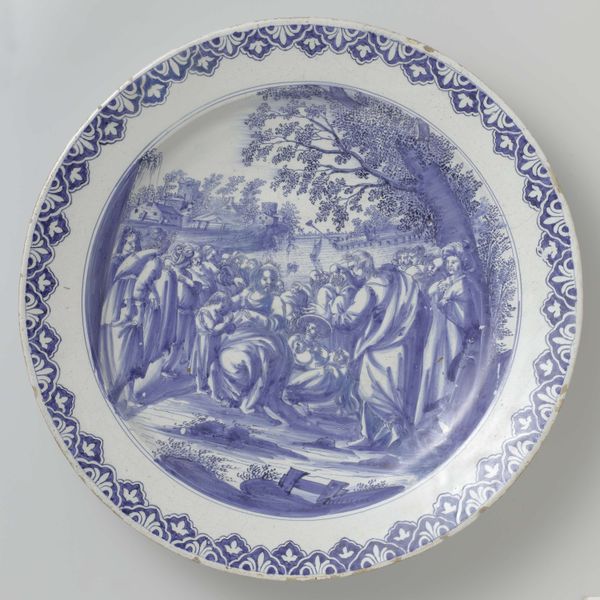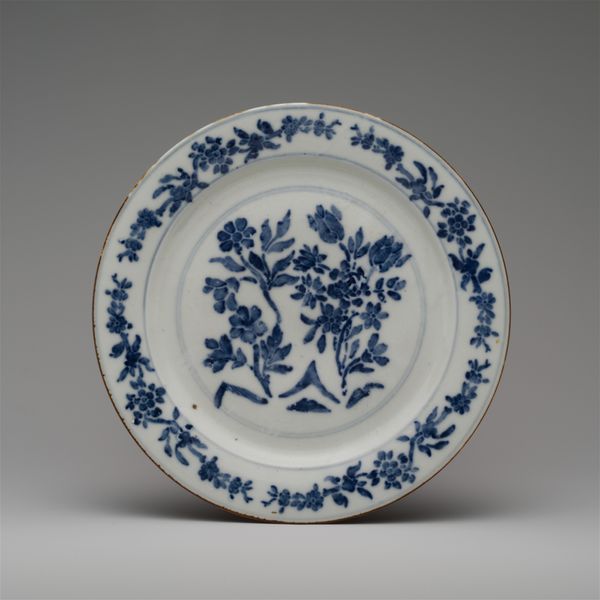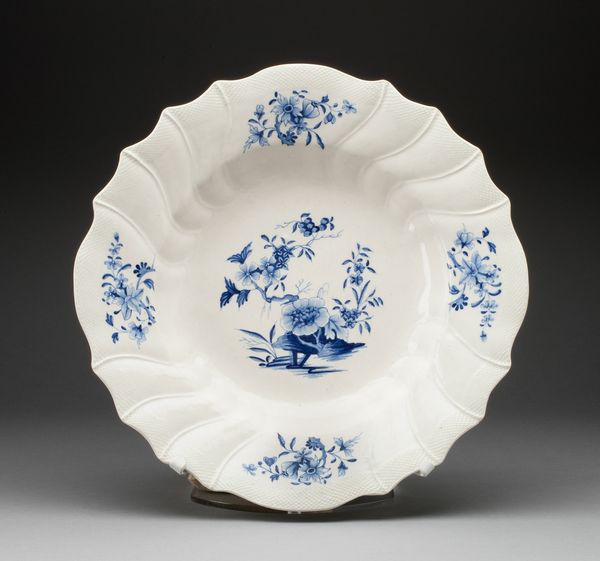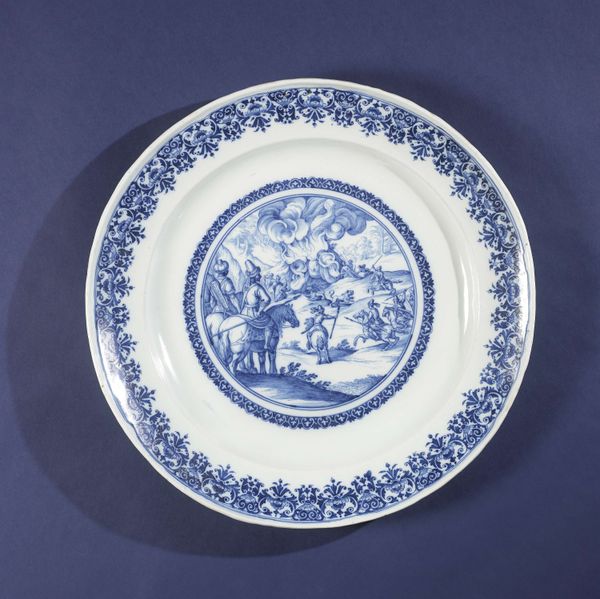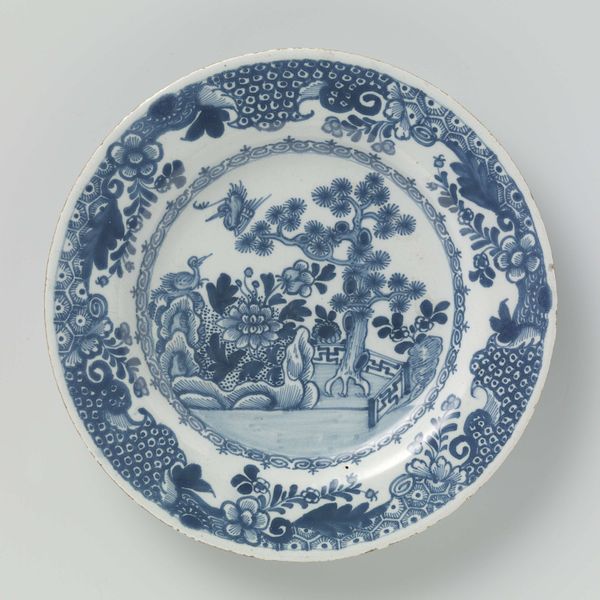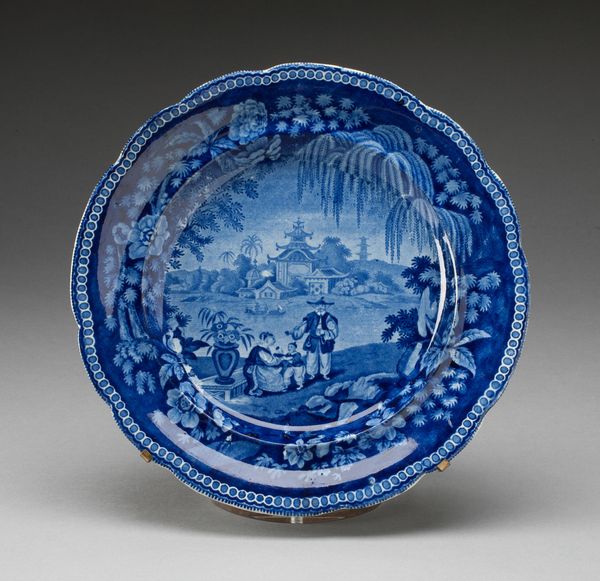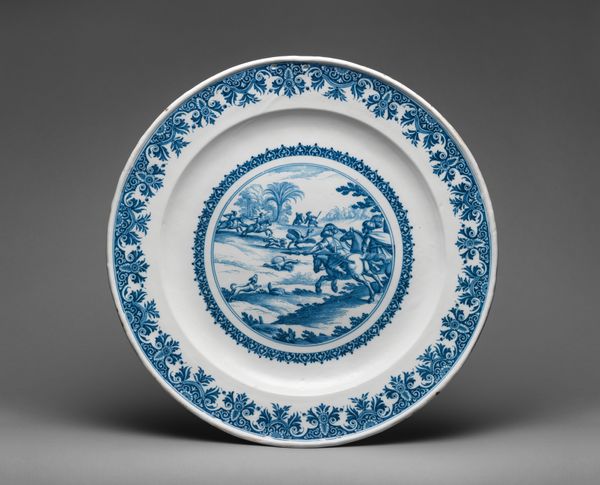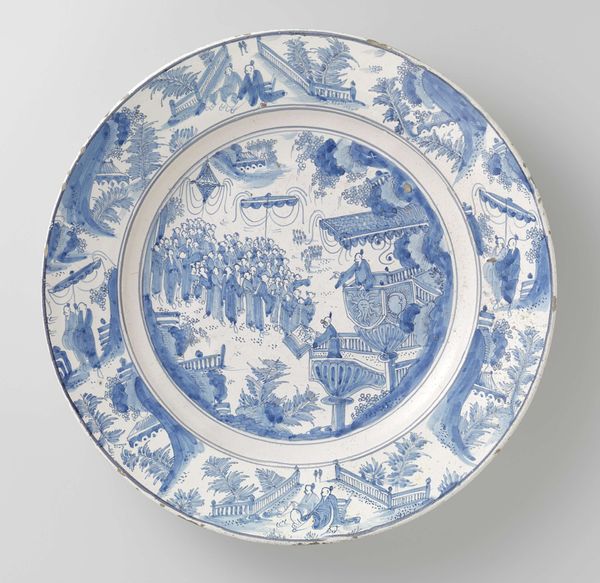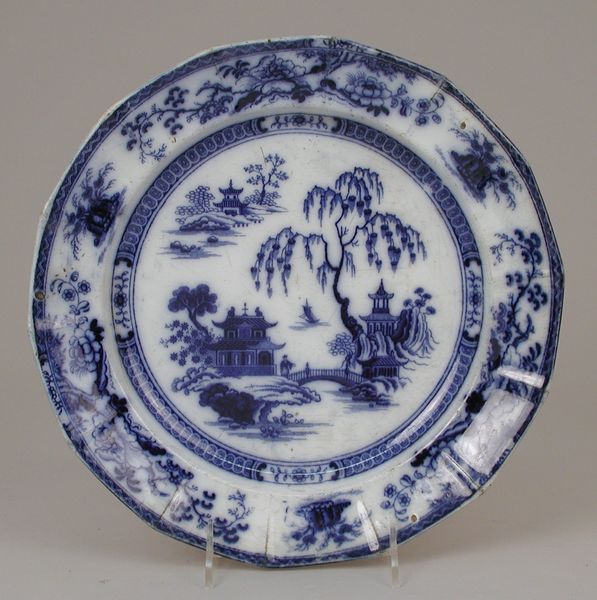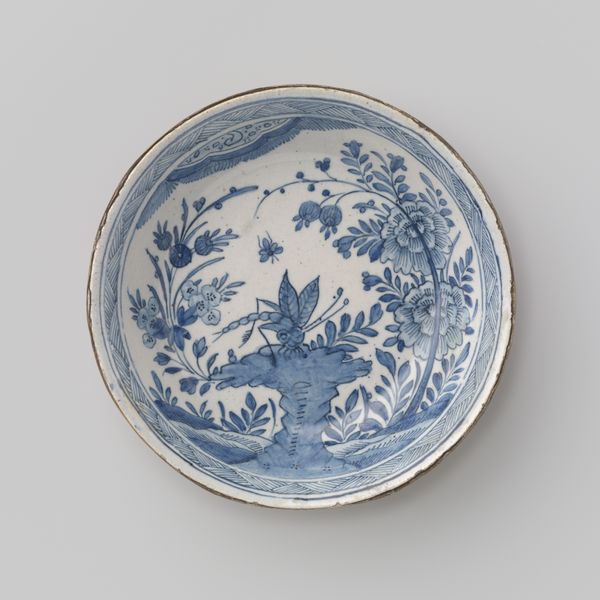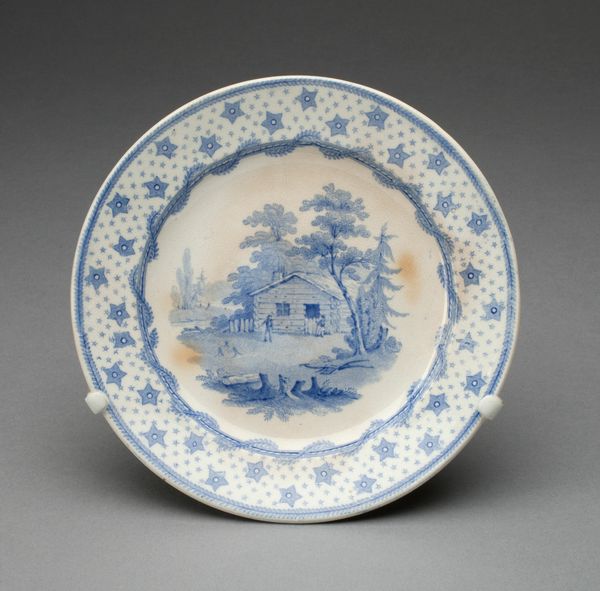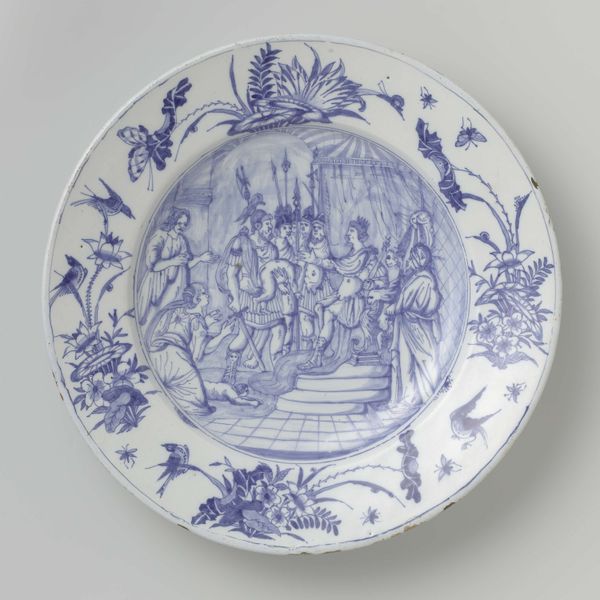
ceramic, earthenware
#
landscape
#
ceramic
#
earthenware
#
stoneware
#
england
#
ceramic
#
decorative-art
Dimensions: Diam. 9 5/8 in. (24.4 cm)
Copyright: Public Domain
Editor: This earthenware plate was produced by William Ridgway, Son & Co. sometime between 1841 and 1851. The blue and white imagery gives it a somewhat somber, romantic feel, like an old photograph. What visual elements stand out to you? Curator: The repeating tree-like motif around the plate’s edge immediately strikes me. It creates a contained yet somewhat claustrophobic border for the central landscape scene. Notice how the intricate detailing of this border contrasts with the smoother, less defined area within. This play of texture and tone builds a quiet tension. Editor: Yes, I see that contrast now. It's almost like the scene is being viewed through a patterned screen. Curator: Precisely. Also, observe how the limited color palette focuses attention on form and line. The delicate rendering of the trees, figures, and architecture invites a structural analysis. We see an interplay between the organic shapes of nature and the geometric forms of the buildings. How do these elements work together? Editor: They seem almost balanced, but the weeping willow dominates the scene and feels heavy compared to the ruined structure in the back. Is that contrast intentional, do you think? Curator: Intent is difficult to determine definitively. However, that imbalance, or perhaps a visual discordance, could signify deeper structural oppositions. The eye is drawn repeatedly between these compositional elements, creating an ongoing visual negotiation. Editor: This was quite enlightening! I never thought about analyzing something as simple as a plate through form and structure. Curator: Indeed, by analyzing an object’s inherent elements, one can find endless artistic merit.
Comments
No comments
Be the first to comment and join the conversation on the ultimate creative platform.

